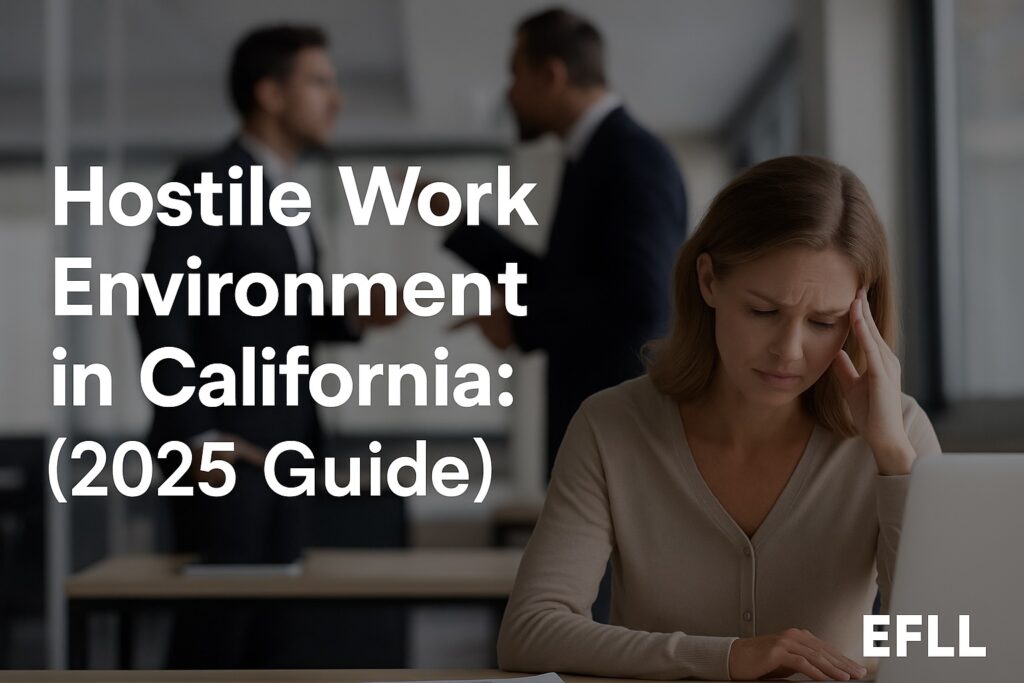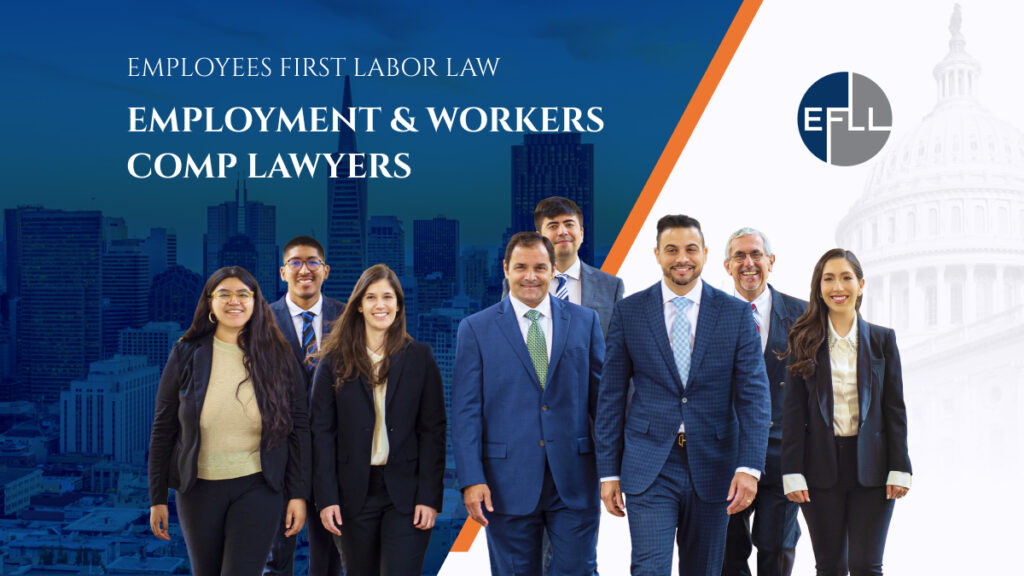
A hostile work environment isn’t just unfair—it may be illegal. Under California law, employers are required to provide a workplace free from harassment and discrimination. If your workplace is filled with abuse, threats, intimidation, or discrimination based on a protected class, you may have a right to file a lawsuit or even pursue a workers’ compensation claim for psychological injury.
At Employees First Labor Law (EFLL), we help workers fight back when their work environment turns toxic. Here’s what you need to know if you’re facing a hostile work environment in California.
What Is a Hostile Work Environment Under California Law?
Under the Fair Employment and Housing Act (FEHA)—California Government Code §§ 12940 et seq.—a hostile work environment occurs when harassment becomes so severe or pervasive that it alters the conditions of your employment and creates an abusive working atmosphere.
Harassment is illegal when it is based on a protected characteristic.
Learn more about your rights under California Employment Law.
What Are Protected Classes Under FEHA?
FEHA protects California workers from harassment or discrimination based on the following protected categories:
- Race or color
- National origin or ancestry
- Sex or gender, including pregnancy, childbirth, breastfeeding, and related medical conditions
- Sexual orientation
- Gender identity and gender expression
- Religion or religious creed
- Age (40 and over)
- Disability (physical or mental)
- Medical condition (e.g., cancer, genetic characteristics)
- Genetic information
- Marital status
- Military or veteran status
(Source: Cal. Gov. Code § 12940(j))

Examples of a Hostile Work Environment
- A supervisor who makes repeated sexual comments or advances
- Coworkers who use racial slurs or tell offensive jokes based on national origin
- Managers who mock an employee’s disability or refuse to accommodate it
- Employees who are regularly bullied or demeaned for being LGBTQ+
Harassment can be verbal, physical, visual (emails, posters), or digital (texts, DMs). The key is whether the conduct is unwelcome, based on a protected class, and either severe or pervasive.
Who Can Be Held Responsible?
- Employers are strictly liable for harassment by supervisors.
- Employers are also liable for harassment by coworkers or third parties (like clients or vendors) if they knew or should have known about it and failed to take prompt corrective action.
(Cal. Gov. Code § 12940(j)(1), (j)(3))
What If the Harassment Causes Emotional Harm?
If the hostile work environment causes anxiety, depression, or psychological injury, you may be entitled to workers’ compensation benefits in addition to a civil claim.
Under California Labor Code § 3208.3, employees can file for psychiatric injuries if the mental distress is caused predominantly by actual events of employment—such as sustained harassment, discrimination, or retaliation.
Learn more about how we fight for injured workers on our Workers’ Compensation page.
What To Do If You’re Being Harassed at Work
- Document everything – Write down incidents, save emails, take screenshots.
- Report the harassment internally – HR, supervisor, or designated complaint process.
- Contact a California employment attorney – Like EFLL. Don’t wait. Protect your rights early.
You have one year to file a complaint with the Civil Rights Department (CRD) (formerly DFEH), which is required before filing a lawsuit under FEHA. But if the harassment causes psychological injury, you may also have limited time to file a workers’ compensation claim—so act fast.
What Can You Recover in a Hostile Work Environment Case?
- Lost wages and benefits
- Compensation for emotional distress
- Attorneys’ fees and litigation costs
- Punitive damages (for malicious or reckless conduct)
- Medical treatment and temporary disability through workers’ comp (for psychiatric claims)

You Deserve a Safe Workplace
At Employees First Labor Law, we’re not afraid to take on the biggest employers in California. We’ve helped thousands of workers recover millions—and we’re just getting started.
📞 Contact EFLL for a free consultation today.
We’ll fight to get your treatment approved and ensure your recovery isn’t left in the hands of bureaucracy.



